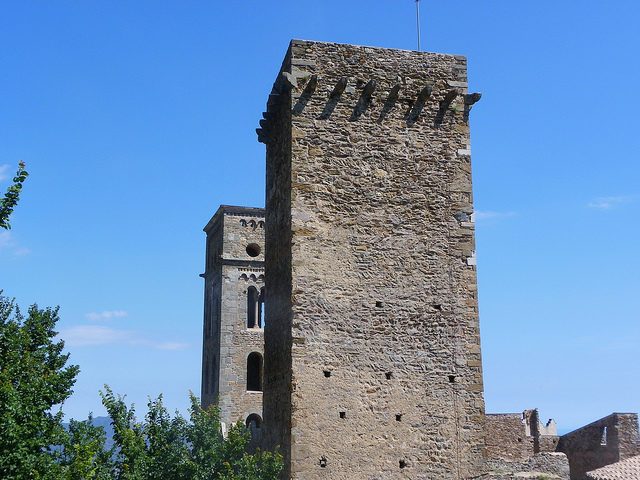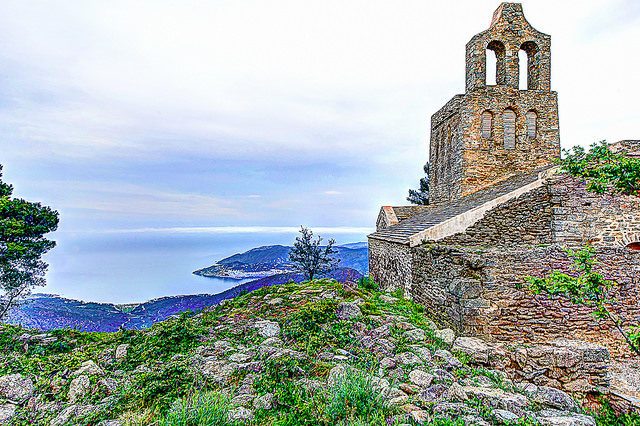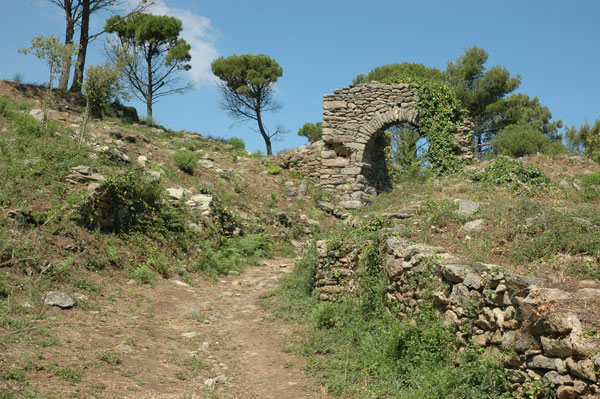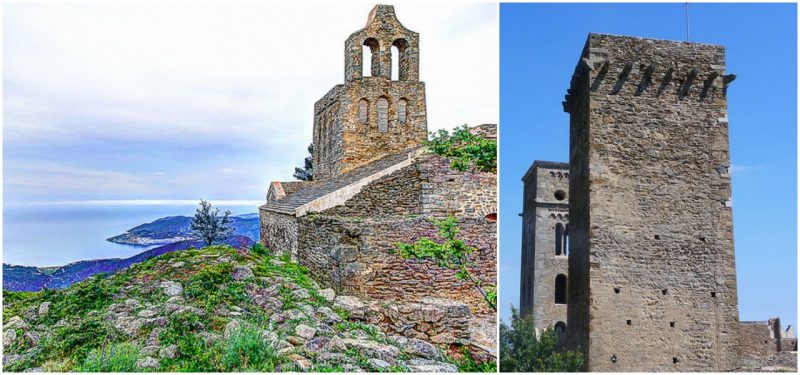Santa Cruz de Rodes is an abandoned medieval church in northeast Catalonia, Spain. This temple used to be the center of what was once a large settlement beside the Sierra de Rodes mountain range. To this day, out of all the houses and community buildings, only a few stand, and some of them in ruins. The town around the church was slowly abandoned and was gradually deconstructed and demolished throughout the centuries.
The remains of this medieval town are few. A handful of abandoned houses, two towers, and its crown jewel–the church of Santa Cruz de Rodes (Santa Creu de Rodes in Catalan). All of the structures are built mostly from stone and wood as this is a very old settlement. The two towers are located at the entrance of the town with a clear purpose: to watch for approaching foreigners and for defense. Between the towers there used to be an arched gateway that served as the official entrance to town. The large wooden gate was supported by the arched gateway, constructed of both wood and carved stone. An existing trace of a paved road dividing the town in half and leading straight to the church is still visible.

Without the information of exactly when Santa Cruz de Rodes was built, we only know that it is first mentioned in a letter written by Pope Benedict VI in the year 974. The church was consecrated in 1113 in the presence of emissaries sent by the Pope John XV.
The books of the priests in charge of the church in the years later show that Santa Cruz de Rodes with its lands and community was the most influential and most powerful church in all of northeastern Catalonia.

By the 14th century, the church controlled the economy in the area, having the largest market on its lands. Inhabitants of surrounding villages and smaller communities were moving to live on its property as there was fertile land and bigger chances for profit. The proximity to the sea was also a very convenient advantage. However after every rise comes a fall, and no one could predict how the community would change. The Great Plague, or Black Death, hit the village in 1345.
From the church books we know that, in the same year, 24 monks died from plague. The population of the town was reduced to one-tenth of previous numbers. People who survived the disease were under constant threat from Mediterranean pirates attacking the weakened towns. Santa Cruz de Rodes became a prime example of a previously economically strong and wealthy community gone down and out, flat broke.

The next information about the church comes from 1455, again written by a priest. It records that there were three priests serving the church at this time with all the help from the community they could get. The bad times had taken their toll, and the church and its community were much diminished. By 1572 Santa Cruz de Rodes was no longer performing parochial functions and was soon afterwards abandoned. The town was left empty as well. Some historians claim that many of its inhabitants participated in the conquest of Mallorca and eventually settled there, building houses in what later they called the “Santa Creu” district.
Santa Cruz de Rodes and its surroundings today belong to the Inventory of the Architectural Heritage of Catalonia (Inventari del Patrimoni Arquitectònic de Catalunya) and they have carried out many archaeological interventions and excavations during the last 40 years. Even though the land is protected by the government of Catalonia, it is an open space and free passing zone. Not many tourists visit it, but those that do say that the area is a prime hiking spot.
